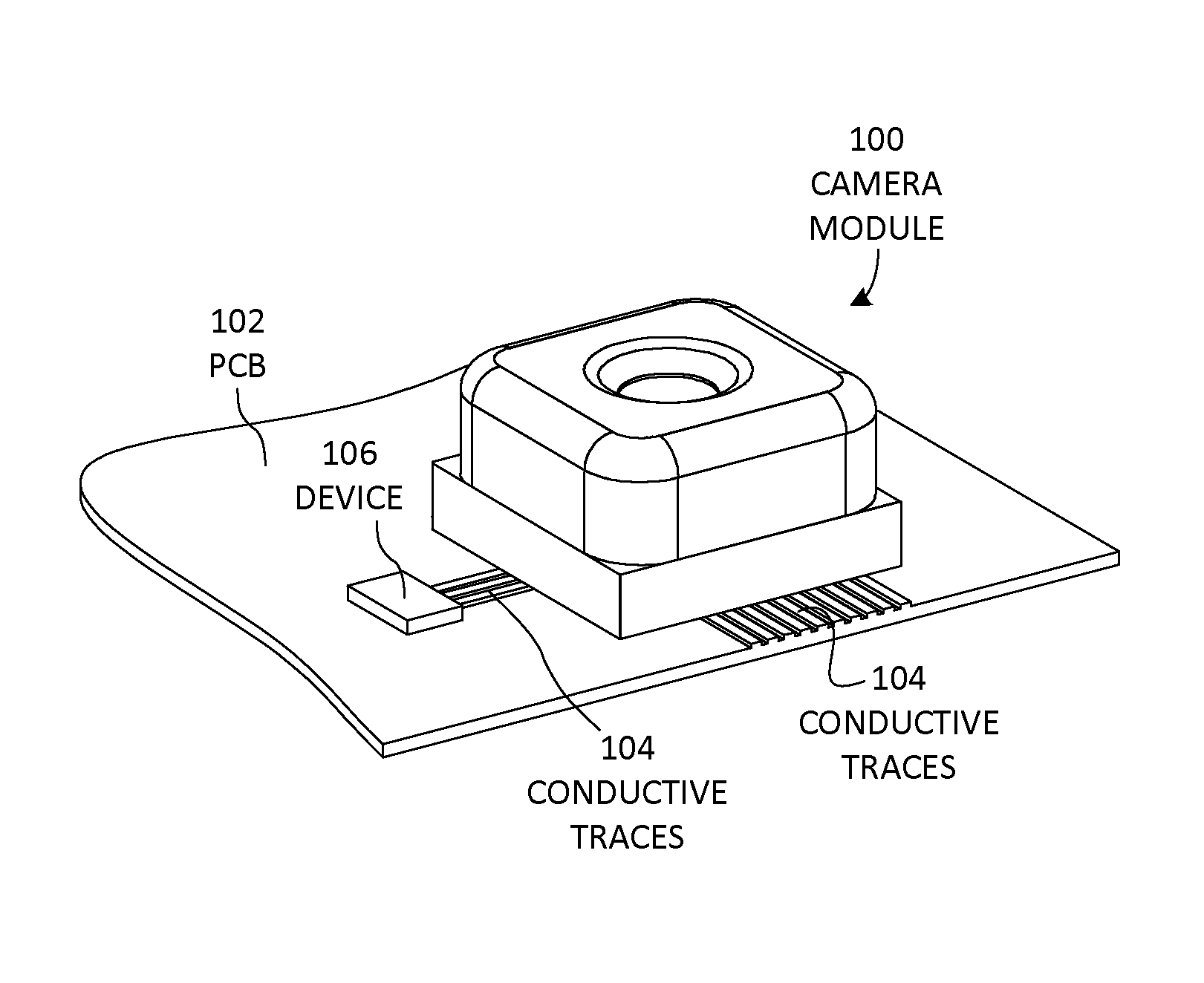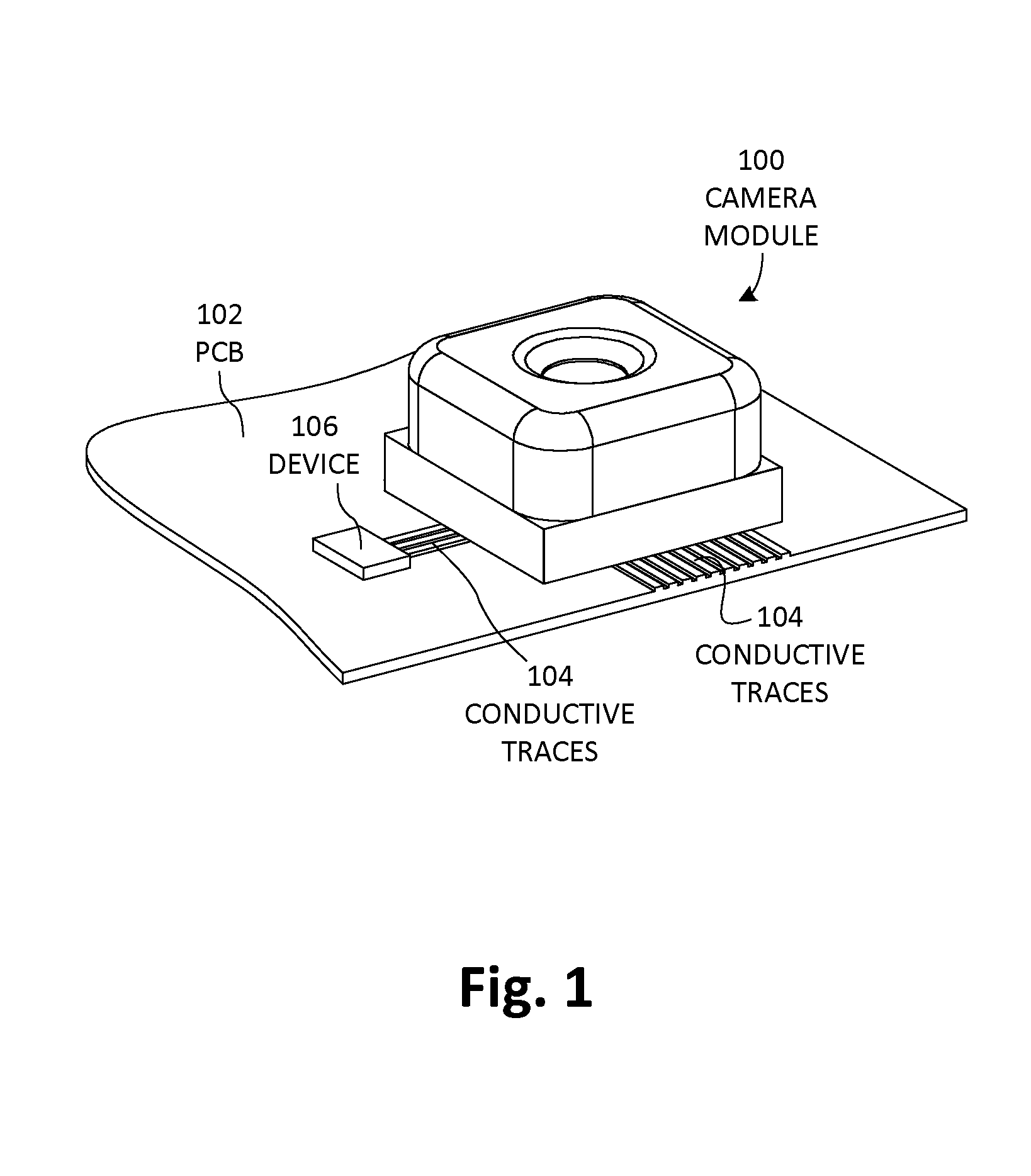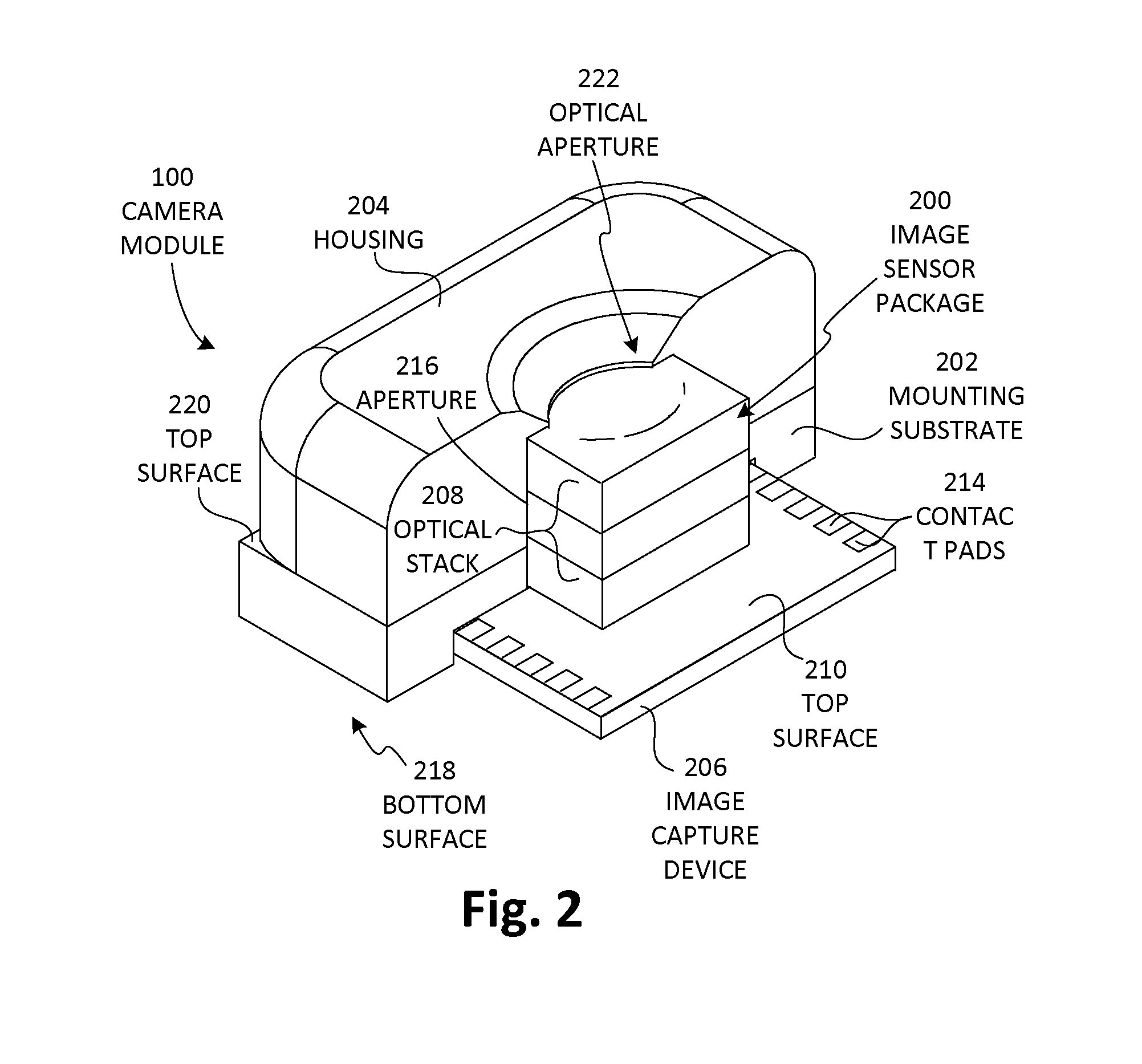Small form factor modules using wafer level optics with bottom cavity and flip-chip assembly
a technology of flip-chip and wafer level, applied in the field of electronic devices, can solve the problems of bare icd dies being extremely vulnerable to contamination, icds being extremely vulnerable, etc., and achieve the effects of reducing assembly tolerances, facilitating the attachment of camera modules, and fewer components and manufacturing steps
- Summary
- Abstract
- Description
- Claims
- Application Information
AI Technical Summary
Benefits of technology
Problems solved by technology
Method used
Image
Examples
Embodiment Construction
[0032]The present invention overcomes the problems associated with the prior art, by providing a simplified wafer level camera module that can withstand reflow soldering conditions. In the following description, numerous specific details are set forth (e.g., number of lenses, type of epoxy, electrical contact types, etc.) in order to provide a thorough understanding of the invention. Those skilled in the art will recognize, however, that the invention may be practiced apart from these specific details. In other instances, details of well known electronic assembly practices and equipment have been omitted, so as not to unnecessarily obscure the present invention.
[0033]FIG. 1 is a perspective view of a camera module 100 according to one embodiment of the present invention. Camera module 100 is shown mounted on a portion of a printed circuit board (PCB) 102 that represents a main PCB of a camera hosting device (e.g., cell phone, PDA, etc.). Camera module 100 communicates electrically w...
PUM
 Login to View More
Login to View More Abstract
Description
Claims
Application Information
 Login to View More
Login to View More - R&D
- Intellectual Property
- Life Sciences
- Materials
- Tech Scout
- Unparalleled Data Quality
- Higher Quality Content
- 60% Fewer Hallucinations
Browse by: Latest US Patents, China's latest patents, Technical Efficacy Thesaurus, Application Domain, Technology Topic, Popular Technical Reports.
© 2025 PatSnap. All rights reserved.Legal|Privacy policy|Modern Slavery Act Transparency Statement|Sitemap|About US| Contact US: help@patsnap.com



